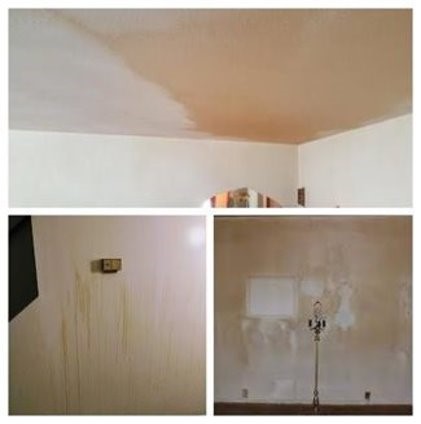Smokefree Housing
Information from the American Lung Association, a Tulsa Apartment Association Community Partner.

For residents of multi-unit housing (e.g., apartment buildings and condominiums), secondhand smoke can be a major concern given that it can migrate from other units and common areas and travel through doorways, cracks in walls, electrical lines, plumbing, and ventilation systems.
In the last decade, the availability of smokefree multi-unit housing has skyrocketed as a result of greater awareness of the dangers of secondhand smoke, increased consumer demand, state and local advocacy efforts, and recommendations issued by federal authorities including the U.S. Department for Housing and Urban Development (HUD) and Environmental Protection Agency (EPA).
Smokefree multi-unit housing policies are beneficial for both residents and property owners. Going smokefree promotes residents' health by protecting them from secondhand smoke while improving a property manager's bottom line through reduced turnover costs and decreased fire risks.
How to Adopt, Implement and Enforce a Smokefree Policy
- Adopting a Smokefree Policy
- There are many things to consider when adopting a smokefree policy.
- Who should your smokefree policy apply to.
- Apply the policy to everyone equally (staff, residents, and visitors)
- What products to include in your smokefree policy.
- Prohibited tobacco products (cigarettes, cigars, pipes, hookah)
- E-cigarettes
- Where on your property should the smokefree policy cover?
- All indoor areas-units and common areas
- All outdoor areas within 25ft from building, entrance ways, and balcony
- Designated Outdoor Area
- On entire property
- When should you adopt a smokefree policy
- Provide enough notice to tenants about the change.
- Involve residents with process to create buy-in
- Why to adopt a smokefree policy
- To reduce the secondhand and thirdhand smoke exposure
- Save you money in turnover costs
- Who should your smokefree policy apply to.
- There are many things to consider when adopting a smokefree policy.
Benefits of Adopting a Smokefree Policy
- Market demand is high for smokefree housing
- Secondhand smoke exposure poses serious health threats to children and adults
- Smokefree polices prevent damage to flooring, drapery, appliances, etc.
- Your property may qualify for reduced property casualty insurance rates
- Every person living in multiunit housing deserves to breathe smokefree air.
- Listing on the Oklahoma Smokefree Housing Directory
- Free decals and signage for your property
Effects of Second and Thirdhand Smoke
- Secondhand smoke is the combination of smoke from the burning end of a cigarette and the smoke breathed out by a smoker
- Secondhand smoke can travel into an apartment from other apartments and common areas through doorways, cracks in walls, electrical lines, ventilation systems and plumbing.
- Opening windows and using fans does not remove secondhand smoke.
- Thirdhand smoke occurs when cancer causing residue from tobacco smoke sticks to surfaces such as carpets and walls
- Chemicals that absorb into surfaces eventually break down and desorb back into the air
- Residue can continue to damage property, even after the smoker moves out, and can be picked up when people touch surfaces

- Multi-Unit Housing Technical Assistance Survey
- Take this brief 2- minute Multi-Unit Housing Technical Assistance Survey to share your interest in smokefree housing with the American Lung Association so they may learn what type of resources your property may need. For example: signage, sample smokefree policy, education materials, and more. Some of the FREE resources that are available include the following:
- Free Personalized Policy Writing Assistance (Unique to Your Property)
- Free Communication Documents to Provide to Residents.
- Free Signage and Window Clings for Your Property
- Take this brief 2- minute Multi-Unit Housing Technical Assistance Survey to share your interest in smokefree housing with the American Lung Association so they may learn what type of resources your property may need. For example: signage, sample smokefree policy, education materials, and more. Some of the FREE resources that are available include the following:
- Free Promotion of Your Properties via our Smokefree Housing Directory
- The Oklahoma Smokefree Housing Directory & Recognition Program is a comprehensive listing of all multi-unit properties in the state of Oklahoma that have adopted a smokefree policy.
- The Oklahoma Smokefree Housing Directory & Recognition Program is a comprehensive listing of all multi-unit properties in the state of Oklahoma that have adopted a smokefree policy.
- Free Tobacco Cessation Support for Residents
- Oklahoma Tobacco Helpline
- The Oklahoma Tobacco Helpline is FREE and available 24/7. They provide tools and support to help you quit tobacco your own way and we never lecture or judge. Want advice, support and free patches, gum or lozenges? Call 1-800-Quit Now or visit www.oklhelpline.com.
- Freedom From Smoking
- The American Lung Association’s Freedom From Smoking program is for tobacco user who are ready to quit. Because most people already know that smoking using tobacco is bad for their health, the program focuses almost exclusively on how to quit, not why to quit.
- Oklahoma Tobacco Helpline
Video
Smokefree Housing: How to adopt, implement, and enforce a smokefree policy
- The American Lung Association is the leading organization working to save lives by improving lung health and preventing lung disease, through research, education, and advocacy.
- Through funding from the Oklahoma State Health Department, the Lung Association provides free tobacco cessation resources and technical assistance for smokefree housing to multi-unit housing managers, owners and residents.

